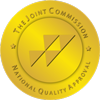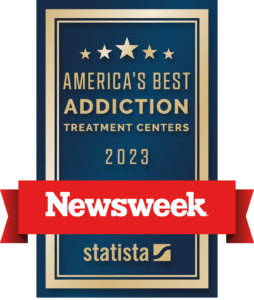Fentanyl Detox and Addiction Treatment
China girl, china white, dance fever, Goodfellas, great bear, he-man, china town, poison, tango, apace, and cash. These are all street names for a deadly substance: fentanyl.
According to the National Institute on Drug Abuse (NIDA), Missouri has an uptick in opioid deaths. In 2018, 1,032 deaths due to opioids went up over 19% from the previous year. However, these are formal reports. The numbers may be higher.
Fentanyl withdrawal symptoms themself keep many dependent on it. Those who suffer from a dependency to this deadly drug must seek a fentanyl detox or other form of fentanyl addiction treatment. Otherwise, recovery may be impossible.

What Is Fentanyl?
Fentanyl is a synthetic opioid that is known to be up to 100 times stronger than morphine. It’s commonly used to treat individuals with chronic pain. Additionally, some people have a bad reaction to some opioids. Fentanyl gives these people another option. It’s known to have a short-term, euphoric effect.
Originally, fentanyl was made to help people with cancer. People with cancer can apply a patch with it to alleviate symptoms. With its advent some exploit it. Illegal labs make it without any medical supervision or permission to sell.
There is a danger that comes from this. Some dealers try to exploit people with a substance use disorder by mixing it into what they want. For example, they might cut heroin with fentanyl to lower their cost. A drug dependent person can easily overdose this way.
Common Types of Fentanyl
People who need fentanyl addiction treatment might be familiar with different forms of it. The pharmaceutical industry creates these forms legally. Different forms may be used depending on what medical condition a patient might have.
There are six common types of fentanyl:
- Actiq – It comes attached to a stick, which people place under their tongue. It may be used in addition to other pain medications.
- Duragesic – Its inception was in the 1990s in the form of a patch. A doctor may prescribe it to those who are in moderate to severe pain.
- Sublimaze – An injectable form of fentanyl, medical professionals use this in more extreme cases. It helps with surgery pain.
- Subsys – This is a spray doctors administer under the tongue. It works immediately.
- Abstral – Doctors will place this tablet form of fentanyl under the tongue. It’s used for people who have a tolerance for other opioids. Cancer patients may use this.
- Lazanda – A nasal spray commonly used by those with cancer pain.
People may find any of these forms sold illegally. In many cases, it looks like a powder. It may be mixed into any number of substances for this reason. Some people who seek fentanyl addiction treatment did not intend to try it in the first place.


How Does Someone Become Addicted to Fentanyl?
A range of people come into Sana Lake for fentanyl addiction treatment and fentanyl detox. People who develop a dependence on drugs come from every walk of life. They don’t casually develop an addiction to this substance. The following is a brief list of examples:
- A doctor introduces a patient with chronic pain to fentanyl. During or after treatment, this patient develops a severe addiction to it.
- Some people in extreme pain can’t afford health insurance. They will need to use more as the fentanyl withdrawal symptoms become more severe.
- Individuals with a mental health disorder may seek anything to stop their pain. This is because of the euphoric, relaxing state it produces.
- Someone with a dependence on cocaine, heroin, ketamine, molly, or any illicit drugs may wind up needing a fentanyl detox. It could be laced in unknown.
Above all, anyone can end up with a drug dependency. Even if that person has never touched alcohol or cigarettes in their life. Doctors still prescribe fentanyl today, although it’s much less common.
What Are Fentanyl Withdrawal Symptoms?
Fentanyl withdrawal symptoms are extremely uncomfortable. Medical patients prescribed it legally may seek it out illegally for this reason. It also keeps people with a substance use disorder hooked on. They may want to stop, but fear what may happen if they do.
Below are some symptoms of fentanyl withdrawal:
- Extreme irritability
- Seizures
- Headaches
- Dizziness
- Blurry eyesight
- The mental need to itch
- Nausea and/or vomiting
- Sleepiness
- Urinary constipation
- Chills
- Insomnia
- Issues breathing
While these are common symptoms, there are many others. People might be in more pain than when they started. Each person reacts differently as they reduce their dependency on fentanyl. Either way, the symptoms are unbearable no matter who it is without treatment.

A Timeline of Fentanyl Withdrawal Symptoms
Symptoms across the scope may manifest over a week. However, even after a week, many may feel lasting effects for years. A co-occurring disorder is likely to pop up without any professional help. In the USA, 9.2 million adults receive a dual diagnosis every year.
Those who have a fentanyl dependency are at risk of an anxiety or mood disorder after 48 hours of withdrawal. This could land them in the perfect scenario to maintain their drug use. It’s a vicious cycle that needs treatment. People who have a substance use disorder through fentanyl will end up with one without a trained doctor.
What Is Fentanyl Detox?
Fentanyl detox is the process of weaning someone off of a fentanyl dependency. It allows members of centers like Sana Lake to recover healthily. While an uncomfortable withdrawal from fentanyl is unavoidable, it doesn’t have to be unbearable.
The substance itself is highly addictive, so individuals struggling with misuse can’t quit abruptly. Instead, licensed clinicians at addiction treatment centers swap one out for another. In other words, a medication to relieve withdrawal symptoms is often necessary. Some of the medications are:
- Methadone
- Buprenorphine (aka Subutex)
- Suboxone
- Naloxone
These FDA-approved drugs are also opioids (minus Naloxone). They’re not as addictive as fentanyl per se, but people can develop an addiction without professional supervision.
Licensed substance use specialists are essential to recovery. They will gradually reduce the dosage of these opioids. Then, once a clinician feels a treatment center member is physically ready they will stop its administration.
In this way, members at treatment centers avoid an unbearable withdrawal. The opioid cravings are minimized, which can prevent an overdose. Since synthetic opioids are responsible for the majority of drug overdose cases, this is important. Around 30,000 Americans died from a synthetic opioid overdose in 2018.

What Does Fentanyl Addiction Treatment Look Like?
Just like addiction recovery, fentanyl addiction treatment looks different for every substance use center member. It’s a given that they will need some form of medication-assisted treatment (MAT). A smooth transition into a positive lifestyle requires this. With the help of a medical professional, members can come up with a plan when to stop opioids completely.
In addition, individuals suffering from a substance use disorder will most likely need a form of therapy. This could be in a group, with family, or alone. Therapies like Cognitive Behavioral Therapy (CBT) and Dialectical Behavior Therapy (DBT) are known to be effective. Moreover, holistic therapies in combination with medication is an option.
Finally, all of these methods come in the form of inpatient or outpatient rehabilitation. Members of a treatment center may need fentanyl addiction treatment around the clock. Others may not want or not be able to do this.
How To Choose The Right Fentanyl Addiction Treatment
Individuals suffering from a substance use disorder should choose a treatment based on their lifestyle. People with a fentanyl dependency may have children to take care of. They might also have a job that they depend on. These lifestyles need a flexible option.
Further, treatment looks different at each stage of recovery. Someone who already sees a medical professional may not need inpatient rehab. Alternatively, a person who is at the start of recovery should consider inpatient rehab in tandem with therapy and MAT.
Also, co-occurring disorders are common with substance use. For example, mental illness (like depression) and a fentanyl dependency often occur at the same time. A program that tackles multiple diagnoses would be appropriate in this case.

Sana Lake Is The Top Choice For Fentanyl Addiction Treatment In Missouri
Sana Lake Recovery Center is one of the only places in the Midwest that offers 24/7 medically managed fentanyl detox. We believe that there is no “right” way to get better. For this reason, we give patients a personalized recovery plan.
The path to recovery is the one of least resistance. While there isn’t a plan that works for everyone, we can craft a plan that will work for you or a loved one with a substance dependency. Symptoms of fentanyl withdrawal are possible to overcome with fentanyl addiction treatment at the right center. Contact us now to conquer drug dependency.
References:
https://www.dea.gov/factsheets/fentanyl
https://www.cdc.gov/drugoverdose/opioids/fentanyl.html
https://www.nami.org/About-Mental-Illness/Common-with-Mental-Illness/Substance-Use-Disorders



